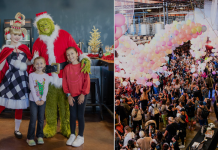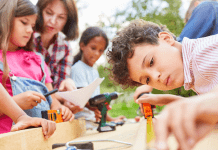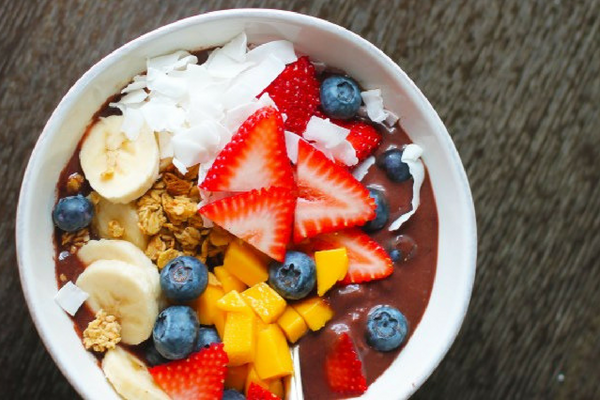Our food is packaged in it, most kids toys are made of it, it’s the knobs on our car dashboard and what we brush toothpaste on our teeth with.
Plastic is a convenience material designed to be used for a very short amount of time but not ever break down, and it’s EVERYWHERE. It seems almost unavoidable, but every July people around the world take the Plastic Free July challenge to try to reduce the amount of single use plastic they use in an effort to avoid landfill waste and to lower their ecological footprint. You can do it too, and it doesn’t take a lot of effort to make a significant impact in the amount of plastic your family uses.
Consider giving it a try for a day, week, month or make it an ongoing effort.
As I’ve been prepping for Plastic Free July, I’ve found the majority of the single use plastic I use comes from buying groceries. Here are a few ways I’ve found to help avoid bringing home so much.
At the Grocery Store
You probably bring your own shopping bags with you since the single use plastic bag ban took effect. If you’re already in the habit of bringing your own shopping bags, slip some produce bags into your stash. Sprouts sells their own mesh ones, you can find fabric ones on Etsy, or make your own. I like these I found at the Container Store in Fashion Valley.

A lot of produce is prepackaged in plastic, but you can find a lot that’s not – mushrooms, bananas, broccoli, bell peppers, squash, apples, oranges, pineapple, lemons, limes, potatoes, onions, carrots, snap peas, herbs and lots more.
The deli counter is a great option for meat, cheese, and pre-made salads. You can bring your own container and they won’t think you’re a freak for it. Yay! I felt a little odd the first time I did this, but the worker at the deli counter didn’t think twice because they get this all the time. They tare the scale then give you the exact amount you’d like. Just let them know you are avoiding plastics so a little sheet (pictured) of it doesn’t slip it’s way in.

Dining Out
The easiest step could be choosing to dine in instead of getting take out, but that’s not always practical. Another easy step is to bring a refillable water bottle or coffee cup with you to avoid bottled drinks, plastic lids and straws.
A slightly bigger step would be to bring your own bag, container and cutlery; otherwise when picking up take out they’ll likely put your food in a plastic container next to a plastic fork and tie it up in plastic with a bow on top.
At Home
The idea of composting can be a bit intimidating but if you think outside your living space there are some good options. If you don’t have space for a compost see if your neighborhood community garden will take it or see if any neighbors would allow you to throw your food waste in their compost. The Nextdoor app is a great way to connect with those who live around you. Composting will lower the frequency needed for changing out plastic trash bags and will break down on it’s own. I just started keeping an airtight jar of food waste under my kitchen sink and walk it to my neighbor’s compost pile when it gets full. I thought it might stink or gross me out but so far so good!

Visit www.PlasticFreeJuly.com to take the pledge, get more details, and almost effortless tips! You’ll probably be surprised at how easy it can be and realize some ways you already participate!
Will you take the pledge with me?



















We have cut back on using plastics in most places. It is so important to know that plastics can contain chemicals which disrupt hormones in growing children and adults too. And, not just containers, but store receipts and other items we encounter on a daily basis. We have to pay attention to not only the ecological impacts but health impacts as well. So much to think about for a mom or dad, but once you know you can do better for your kids, even if it is just in baby steps.
Comments are closed.